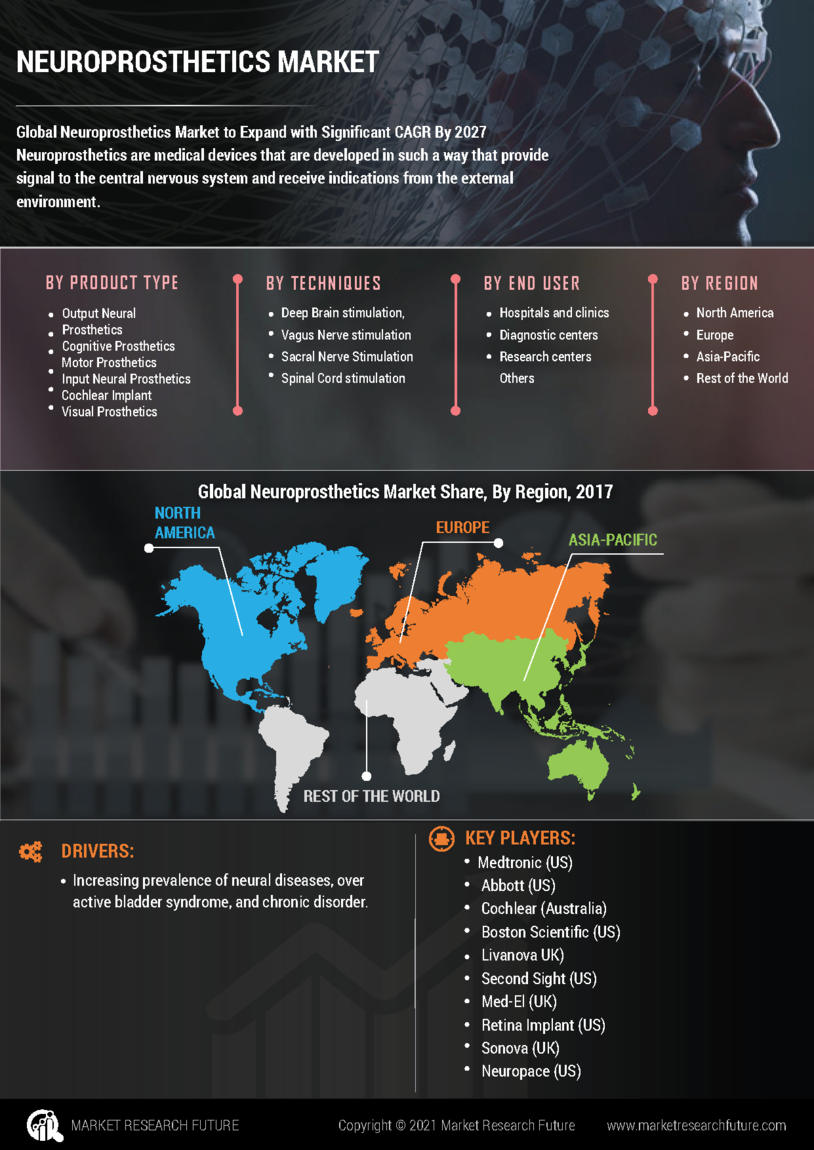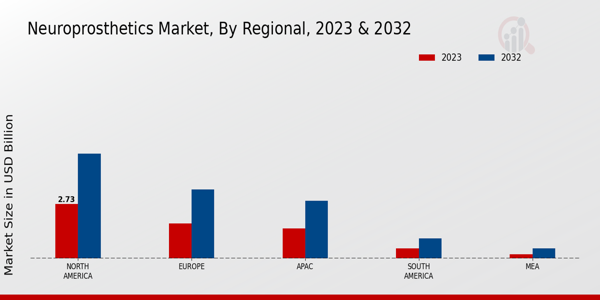Government Initiatives and Funding
Government initiatives and funding play a pivotal role in the growth of the Neuroprosthetics Market. Various governments are increasingly recognizing the importance of neuroprosthetic technologies in improving healthcare outcomes. Funding for research and development in this field is on the rise, with several countries allocating substantial budgets to support innovation. These initiatives not only foster technological advancements but also encourage collaboration between academic institutions and industry players. As a result, the Neuroprosthetics Market is likely to benefit from enhanced research capabilities and the development of cutting-edge devices. Furthermore, government support can facilitate regulatory approvals, expediting the introduction of new products to the market. This collaborative environment is essential for driving progress and ensuring that patients have access to the latest neuroprosthetic solutions.
Rising Investment in Research and Development
Rising investment in research and development is a crucial factor propelling the Neuroprosthetics Market forward. As the demand for advanced neuroprosthetic solutions increases, companies and research institutions are allocating more resources to develop innovative technologies. This investment is essential for creating devices that are not only more effective but also more accessible to a broader range of patients. The Neuroprosthetics Market is witnessing a surge in partnerships between private companies and academic institutions, fostering an environment conducive to innovation. Furthermore, as new materials and techniques are explored, the potential for breakthroughs in neuroprosthetic design and functionality expands. This trend indicates a promising future for the industry, as ongoing research efforts are likely to yield transformative solutions that address the diverse needs of patients with neurological disorders.
Increasing Incidence of Neurological Disorders
The rising incidence of neurological disorders is a critical driver for the Neuroprosthetics Market. Conditions such as stroke, Parkinson's disease, and spinal cord injuries are becoming more prevalent, necessitating effective treatment solutions. According to recent data, the number of individuals affected by these disorders is expected to rise, leading to a greater demand for neuroprosthetic devices. This trend is particularly evident in aging populations, where the likelihood of developing neurological conditions increases. As healthcare systems seek to address these challenges, the Neuroprosthetics Market is positioned to provide innovative solutions that improve the quality of life for patients. The growing awareness of neuroprosthetics as viable treatment options further fuels market expansion, as patients and healthcare providers alike seek advanced technologies to manage these debilitating conditions.
Technological Advancements in Neuroprosthetics
The Neuroprosthetics Market is experiencing rapid technological advancements that enhance the functionality and effectiveness of neuroprosthetic devices. Innovations such as brain-computer interfaces and advanced neural signal processing are paving the way for more sophisticated solutions. These technologies enable better communication between the brain and external devices, improving user experience and outcomes. The market is projected to grow significantly, with estimates suggesting a compound annual growth rate of over 10% in the coming years. This growth is driven by the increasing prevalence of neurological disorders and the demand for innovative treatment options. As technology continues to evolve, the Neuroprosthetics Market is likely to witness the introduction of more user-friendly and efficient devices, further expanding its reach and application.
Growing Awareness and Acceptance of Neuroprosthetics
The growing awareness and acceptance of neuroprosthetics among patients and healthcare professionals are significant drivers for the Neuroprosthetics Market. As educational initiatives and outreach programs increase, more individuals are becoming informed about the benefits and capabilities of neuroprosthetic devices. This heightened awareness is leading to greater acceptance of these technologies as viable treatment options for various neurological conditions. Additionally, healthcare professionals are increasingly recognizing the potential of neuroprosthetics to enhance patient outcomes. This shift in perception is likely to result in higher adoption rates of neuroprosthetic devices, thereby expanding the market. The Neuroprosthetics Market stands to gain from this trend, as more patients seek innovative solutions to improve their quality of life and regain independence.



















Leave a Comment